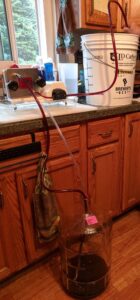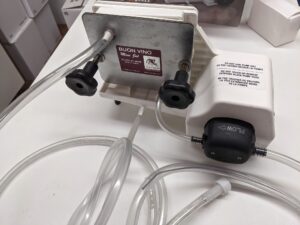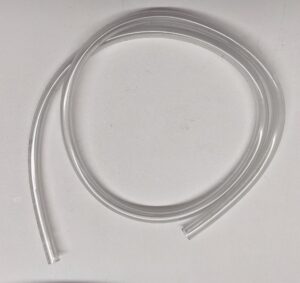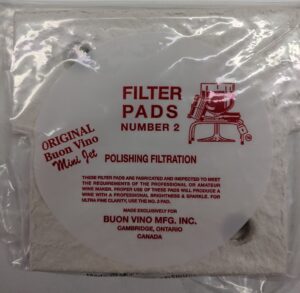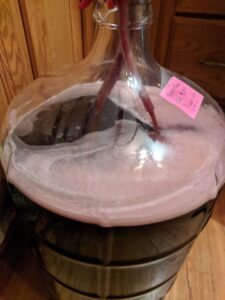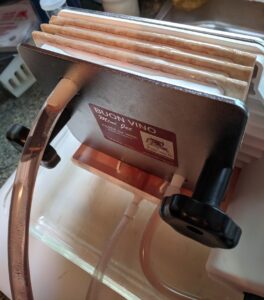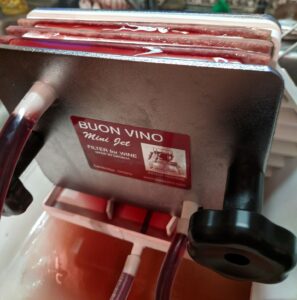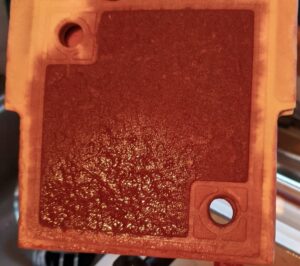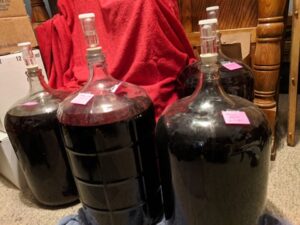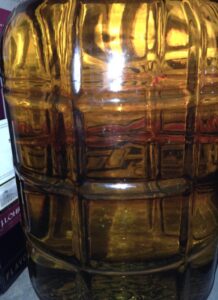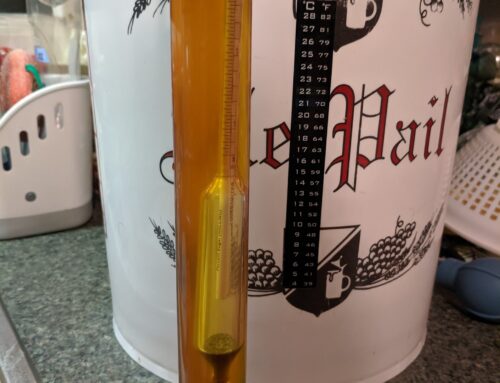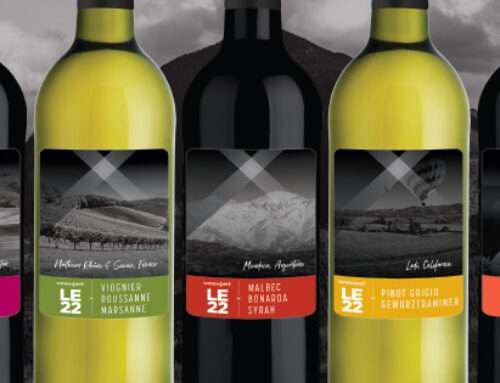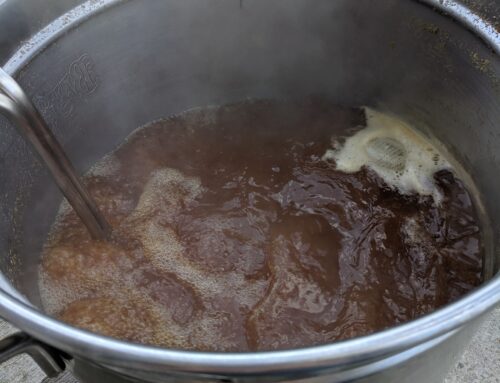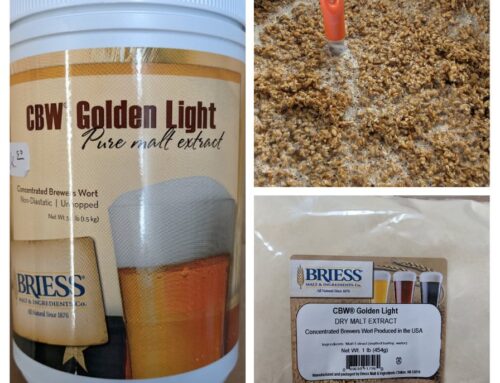Filtering Your Wine
In my fruit winemaking guides, I mentioned that in addition to using fining agents to clear your wine, you could also use a filtering system to filter out any of the smaller particulates that may be keeping your wine less than pristine. I am finally getting around to talking more in-depth about the system we sell and/or rent at Means Cork and Cap, and that I’m familiar with, the Buon Vino MiniJet.
What is it?
The Buon Vino MiniJet is an electric pump filter that pulls your wine from one carboy/bucket through three filter pads of the same coarseness and siphons it back into a clean carboy. I recommend filtering wine that has already been transferred off of sediment a few times, but technically you can filter sediment-heavy wine, which may take longer to filter and more pads. Using this filter will not take the color out of your wine, so you can use it on any style; this is not intended for beer; it will at least take the color out of your beer and maybe some of the hop oils. To filter a six-gallon batch of wine that has little sediment takes about twenty-five to thirty minutes. Make sure to let the machine cool down in between filtering.
Components
Pump: Electrical pump that draws wine out of one container and deposits it into another.
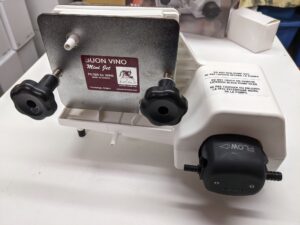
Filter Plates and Knobs: Holds and tightens the three filter pads into place for best filtering results.
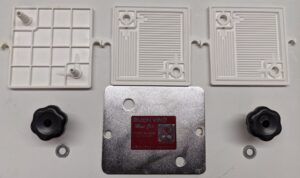
Four Hoses:
• Hose one is the drawing hose and attaches directly to the pump. It has a plastic cap on the bottom and a wire to keep it stiff for ease of use and make it so you can filter wine off sediment.
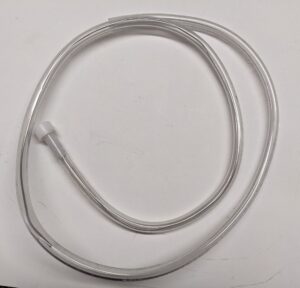
• Hose two looks like a regular siphon hose, and attaches to the filter plates, and goes into the clean carboy to deposit the wine after it’s been through the filter pads.
• Hose three is slightly thinner and shorter than hose number two, attaches to the overflow tray, and goes into the carboy as well, so no wine is wasted, even the wine that drips out of the pads.
• Hose four is a tiny hose that connects the pump to the filter plates.
Filter Pads
Three filter pads of the same coarseness are used at a time to filter the wine. There are three different pads with varying degrees of filtration. The pads are placed between the filter plates in the machine. They need to be tightened as much as possible for the best results.
Pad #1 Coarse Filtration
This filter pad is the coarsest and the one to use if your wine is still sediment-heavy. This pad will help get the large particulates out.
I’d use Pad #1 for fruit wines fermented on the fruit or wines with grape skins to filter out the fruit/grape pulp that could be floating in the wine.
Pad #2 Polishing Filtration
This filter pad is less coarse than the first and can be used after running your wine through Pad #1 or if your wine has been racked off the sediment a few times. This pad will also start to polish your wine, getting rid of the smaller particulates.
I’d use Pad #2 for wines that have been clearing on their own and need a little boost in clarity.
Pad #3 0.5 Micron
This filter pad is the finest and used after running your wine through Pad #2 or if your wine is already clear with little to no sediment. This pad will polish your wine, making it sparkle with clarity.
I use Pad #3 when making kit wines because they are already clear and need that finishing touch to make them sparkle.
Prepping the Pads
The instructions tell you to wet the pads before putting them in the MiniJet. What I like to do is use a glass baking dish, like a cake pan, and fill it with enough water to submerge the pads and let them soak while I’m sanitizing the MiniJet and hoses. After putting the pads in the MiniJet, I dump the water out of the cake pan and place the MiniJet in the pan. If there is any overflow, it will go into the cake pan and not run across the counter.
Prepping the Machine
The MiniJet, and all components, should be sanitized before use and cleaned after use. It would be a mold trap if not cleaned properly. The machine should never be run dry, and to keep the pump well lubricated, don’t run hot water through it to clean or prime it. From experience, hot water strips the lubricant off the pump, making it burn out.
Priming the Machine
To prime the MiniJet, I place the wet filter pads between the plates, tightening them as much as possible, and hook up all the hoses. I put all the hoses in a pitcher or bucket of Easy Clean or clean water; that way, it’s drawing from there and then putting it back in, so it’s just circulating water, and you don’t have to refresh the water continuously. I’d put at least a half-gallon of water through the machine to get everything primed and ready to start pumping wine. One time, I used my filter after renting it to someone, and when I began to prime the filter with water, gross sludge came out of the pump. So, I’m happy I ran water through first and caught the sludge with water rather than having it go into my wine.
Filtering the Wine
(Filtering Wine!)
After priming with water, it’s time to filter your wine! Not that it’s necessary, but I like to transfer my wine into a clean bucket to get it off any sediment, then filter it into a clean carboy. Put the draw tube into the bucket of wine and the overflow and filter tubes into the carboy (pictured below). If you have a bucket clip that fits a racking cane, the hose going from the filter into the carboy will clip into it, so you don’t have to hold it or worry about it slipping out. Start the pump, and make sure everything is running smoothly and it doesn’t run dry!
Other Notes
While filtering, you may notice that wine pools in the overflow tray or on top of the filter pads. That is normal, and sometimes I tilt the machine a little to get the overflow to drain more easily. If you notice that a lot of wine is welling on top of the pads, check to make sure the plates are tight enough; usually, as the pads fill with sediment, more wine will ooze out of the top of them.
(Wine oozing and dripping out of filter pads)
If the pads fill up with sediment quickly and start spraying wine, you probably should have started with a coarser pad. The finer polishing pads are not meant for heavy sediment and will clog quickly, which sometimes will make wine spray out of the pads. This has happened to me near the end of the filtering process when the pads are full.
(Filter pads are full and spraying wine out of bottom)
You can put your wine through the different filter pads consecutively; make sure to let the machine cool down in between. You can also wait in between filtering and let the wine sit a few days.
After you have filtered your wine, put a stopper and airlock on the carboy to let it sit. I say to use a stopper with an airlock because some oxygen bubbles need to escape after being filtered. Also, I’d recommend letting it sit a few days before bottling for the same reason; you don’t want excess oxygen to blow your corks.
You should notice a difference in clarity immediately. Of course, if your wine is still cloudy or has some sediment, you can filter it again, either with the same pad number or the next one in line.
After the filtering is completed, clean the pump by running cold water or Easy Clean through the pump and filter plates; this will rinse any wine left in the pump after filtering. Make sure to clean the overflow tray and all other components of the system, too. Star San can also be run through the pump after it is cleaned to prevent mold.
Why Filter Wine?
Filtering isn’t a necessary step, but if you want to present a polished product for a gift or wedding/party favor, are having difficulty clearing your wine using fining agents, or don’t have time to let your wine clear on its own, running it through the Buon Vino MiniJet filter is a great option! As I mentioned above, I even run kit wines through the filter, which are already clear at the end of their four to eight weeks of sitting, but I like to take the clarity even further for a beautiful, sparkling wine.
Happy filtering!
Caitlin

